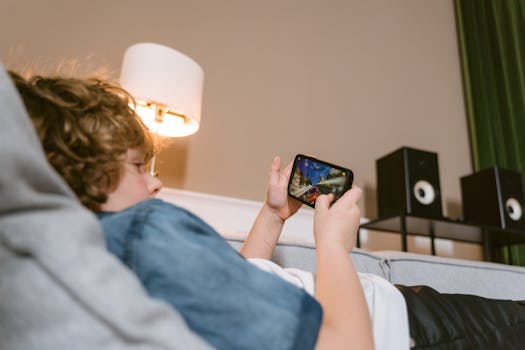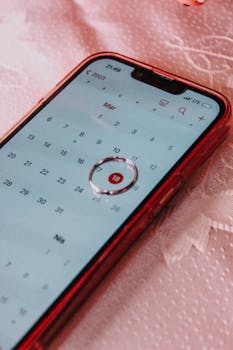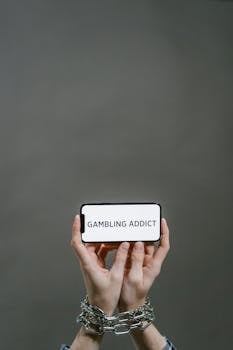Tech and Innovation Hub
Gamification in Apps: Designing Real Engagement for Modern Users
Discover how gamification in apps transforms typical app usage into engaging journeys with proven techniques for onboarding, skill development, daily habits, and user delight.
Anúncios
Most apps you use daily feel nothing like work, even when they ask you for effort. That’s not luck—it’s the smart use of mechanics behind gamification in apps, which shape your experience.
This matters because people crave small wins, recognition, and the thrill of progress. When apps weave these elements into their flow, users stick around, take action, and build habits.
Let’s explore exactly how modern app makers use gamification in apps to hook users, increase engagement, and encourage positive behaviors you’ll actually notice in your daily routines.
Setting Users Up for Success with Clever Onboarding
First impressions in apps set the tone for weeks. An onboarding process with clear goals and feedback helps users understand what to do and why it matters.
For instance, instead of dumping users into a blank dashboard, some apps gently guide you with step-by-step missions. Soon, you’re completing your profile and earning your first reward.
Rule-Based Progress Steps Encourage Momentum
In onboarding, apps can create a checklist of achievable steps. Imagine seeing a progress bar nudge forward every time you upload a photo or set a notification.
Visual progress—like badges appearing or a bar filling—makes tasks less intimidating. You know immediately what comes next, driving you to finish without second-guessing.
Analogous to assembling a puzzle, each onboarding task snaps into place with satisfying feedback. The completion sound or animation gives you a quick jolt and invites the next action.
Mini-Challenge Sequencing Locks In Early Wins
Many apps embed early micro-challenges, such as ‘Invite a friend today’ or ‘Complete your first task.’ You hear a chime, a badge appears, and you feel accomplished.
This structure shifts the mindset from obligation to game-like curiosity. Try giving new users a gentle, rewarding challenge at step three—”Explore your settings and unlock your daily streak”—to create excitement instead of confusion.
An effective sequence opens small but meaningful victories. Each nudge pushes users forward, creating foundational habits before they encounter complex features.
| Onboarding Feature | Gamified Version | Typical User Response | Action to Replicate |
|---|---|---|---|
| Email Signup | Animated badge upon completion | Pride, motivation to continue | Add celebratory feedback after signup |
| Tutorial Walkthrough | Checklists with progress bar | Less drop-off, more engagement | Break tutorials into small goals |
| Setting Preferences | Collectible avatar unlocked | Personal investment increases | Reward user with a visual asset |
| First Use of Core Feature | Instant achievement unlocked | Quick sense of accomplishment | Highlight achievements on main screen |
| Invite a Friend | Bonus points for completion | Social sharing higher at onboarding | Offer points for early sharing |
Driving Habit Formation Through Daily Engagement
Apps that successfully create daily engagement use deliberate mechanics to transform fleeting interest into regular routines.
By weaving gamified systems—like streaks, reminders, and micro-rewards—into everyday use, apps increase the likelihood you’ll come back tomorrow.
Building Streaks and Micro-Challenges for Stickiness
Streak counters aren’t arbitrary; they reframe logging in as a mini-goal you don’t want to break. Even reluctant users will return to keep a week-long streak unbroken.
On a bad day, a gentle nudge—”Don’t lose your streak!”—grabs your attention with urgency. This single sentence is enough to drive another session, reinforcing the cycle.
- Show daily streaks on the home screen to remind users of progress.
- Send end-of-day nudges: “You’re 1 step from a perfect week.”
- Highlight badges for each milestone to reinforce effort.
- Offer bonus points for maintaining streaks through rough patches.
- Encourage sharing progress to harness social accountability.
Every streak celebrated fosters a sense of continuity and achievement users will notice in their routines.
Using Variable Rewards to Spark Anticipation
The novelty of randomized rewards can transform simple routines into opportunities for excitement. A user might think, “What surprise reward pops up if I complete today’s checklist?”
- Introduce mystery boxes unlocked after three consecutive completions.
- Randomize badge shapes or titles for key actions to keep things fresh.
- Deliver intermittent bonuses to reward effort, not just outcomes.
- Allow users to collect unique items, fueling curiosity and return visits.
- Use surprise bonuses to re-engage lapsed users at just the right moment.
Variable rewards add playful unpredictability to routines, turning them into daily highlights for users who would otherwise drift away.
Designing Meaningful Progression Systems for Motivation
When done right, progression systems provide visible growth over time. Earning levels, unlocking stages, or climbing a leaderboard transforms personal development into a meaningful journey.
Unlike points-only systems, robust progression keeps attention because users feel they’re building skills and advancing, not just chasing numbers.
Scenario: Leveling Up for Tangible Skills
Imagine you’re learning a language in an app. Instead of generic points, you see your skill tree grow outward, each branch labeled with a skill you’ve mastered this week.
Every correct answer populates one part of your progress bar and reveals new, more challenging activities. The growth feels concrete, not abstract—a reminder that your time translates into real skill.
Copy this approach: tie progression not just to app visits, but to measurable skill milestones that make sense in your real life.
Checklist: Crafting Progress Systems with Real Substance
To build progression with impact, run through this mini-checklist for your feature:
– Define a clear end-goal users actually care about achieving.
– Ensure intermediate levels reflect genuine competence, not just participation.
– Offer feedback after each milestone explaining why it matters (e.g., “Now you can practice advanced skills”).
– Show visual change, such as unlocking a new section or changed avatar, every few levels to celebrate progress.
– Provide opportunity for users to review their journey and see personal growth, reinforcing long-term motivation.
Encouraging Social Interaction and Friendly Competition
Social layers in gamification in apps nudge users to interact, celebrate wins, and sometimes spar in lighthearted competition. These add a real-world texture apps can’t achieve with points alone.
Concrete steps like adding leaderboards or challenge invites unlock deeper user participation, because progress is visible and meaningful among peers.
Rule: Keep Competition Friendly, Never Intimidating
When introducing leaderboards, show a user only their direct peers—just above and below their rank. This protects motivation and helps them say, “If I try one more task, I’ll move up.”
Highlighting recent activity like “Lisa just overtook your spot!” renews urgency and encourages friendly rivalry, not intimidation. Make the next step achievable—“Complete 2 more tasks to regain your spot.”
Always include congratulatory messages for progress, even if users fall in rank. This preserves positive engagement and keeps challenges supportive.
Scenario: Creating Collaboration, Not Just Competition
In some environments, teams can work together to reach collective goals. Display a progress gauge for group achievements—say, “Your team is 82 percent to this week’s milestone.”
Offer individual shout-outs for small wins, like, “Chris contributed the last piece! High five your teammate.” This builds camaraderie while celebrating personal actions that made a difference.
Add optional chat or emoji reactions to reinforce group celebration. Invite users: “Send an emoji to cheer your team on now!”
Making Feedback Intuitive, Timely, and Satisfying
Effective apps never leave users guessing whether they’re making progress. They give feedback that’s instantly visible, easy to understand, and emotionally rewarding right as you take action.
Button presses glow, congratulations pop up, and tiny sounds spark small bursts of dopamine, all making users feel seen and encouraged in real-time.
Checklist: Feedback Elements to Layer In
– Use progress bars that fill right after each core action.
– Enliven notifications: animate, wink, or buzz when tasks complete.
– Deliver quick messages that tie each action to a benefit (“Nice! This puts you closer to your daily streak.”).
– Use color-coded success and error cues for clarity: green for wins, red for retries.
– Make badges visible on profile screens to reinforce ongoing achievement and remind users where their effort has paid off.
Scripted Example: Real-Time Encouragement Drives Motivation
A user submits a project report in an app. Instantly a banner flashes, “Great job—project done! Check your updated dashboard for next steps!” This script lets users know exactly how their action mattered.
Try scripting feedback like: “Congratulations! You just unlocked a bonus. Want to see how close you are to the next achievement?” Specific, timely messages boost morale and keep engagement steady.
Satisfying feedback transforms effort into celebration, raising the odds of users returning for the next challenge.
Design Details That Shape User Emotion and Retention
Every design choice in gamification in apps, from the way buttons bounce to the tone of notifications, can influence mood and retention. These moments form the personality users associate with your app.
Done well, even small touches—like playful sound effects or vibrant progress bars—build anticipation, trust, and comfort. Users pick up on these signals and they influence how fun, useful, or reliable an app feels.
Analogies: Building Trust Like a Favorite Coffee Shop
Think about a barista who remembers your name. Apps replicate this trust by greeting you, remembering preferences, and celebrating return visits. Say, “Welcome back! Ready to continue your journey?” for a similar effect.
Familiar sounds, consistent visuals, and small recognitions anchor the habit of returning much like a favorite order at a café pulls you back each week. Make every visit personal and rewarding by layering in these details.
Trust develops as the app reliably delivers positive recognition and intuitive guidance at each stage, never making users feel lost or unappreciated.
Micro-Interactions: Creating Delight in Tiny Moments
Small animations where coins glitter, avatars wave, or buttons spring to life add delight. Users may not verbalize it, but they remember,”That app always gives me a smile when I finish a task.”
Introduce sound cues for specific milestones—like a magical chime for weekly victories. These micro-interactions can elevate routine use into memorable experiences, increasing both enjoyment and brand loyalty in ways users truly feel.
Give users reflective moments—such as revisiting their collection of earned badges. This lets them see achievement build up into something tangible and worth celebrating.
Applying What Works: A Playbook for Small Teams
If you’re planning your own app or want a quick reference for evaluating products, use this actionable playbook. It distills key tactics of gamification in apps into steps you can try, adapt, or evaluate starting today.
- Map daily routines: Note where users take action. Layer mini-challenges and streaks where engagement dips to rekindle interest.
- Sequence feedback: Align visual/audio confirmation with every action, so users feel immediate progress, even for small steps.
- Reward real achievement: Craft badges and milestones around actual skill acquisition, not just basic participation.
- Foster social ties: Add friendly competition, group goals, or mutual ‘cheers’ to keep users connected and invested.
- Review touchpoints: Regularly test the tones, visuals, and feedback styles for their ability to create trust, delight, and satisfaction.
Adapt these strategies with real users, test responses, and iterate quickly. The difference in retention and user enthusiasm can be substantial, and you’ll spot it in your analytics—and user stories—right away.
Lasting Impact: Why Real Gamification Yields Change
When built with intention, gamification in apps doesn’t just boost time-on-task but nurtures real behaviors, skill-building, and joy in daily use.
These techniques—onboarding with goals, daily streaks, skill-based progression, social nudges, and personal feedback—each deliver genuine benefit users will feel and act on.
As you evaluate or create apps, focus on game mechanics that spark motivation, foster real achievement, and build healthy habits. Done well, gamification transforms digital chores into journeys users want to return to—again and again.





